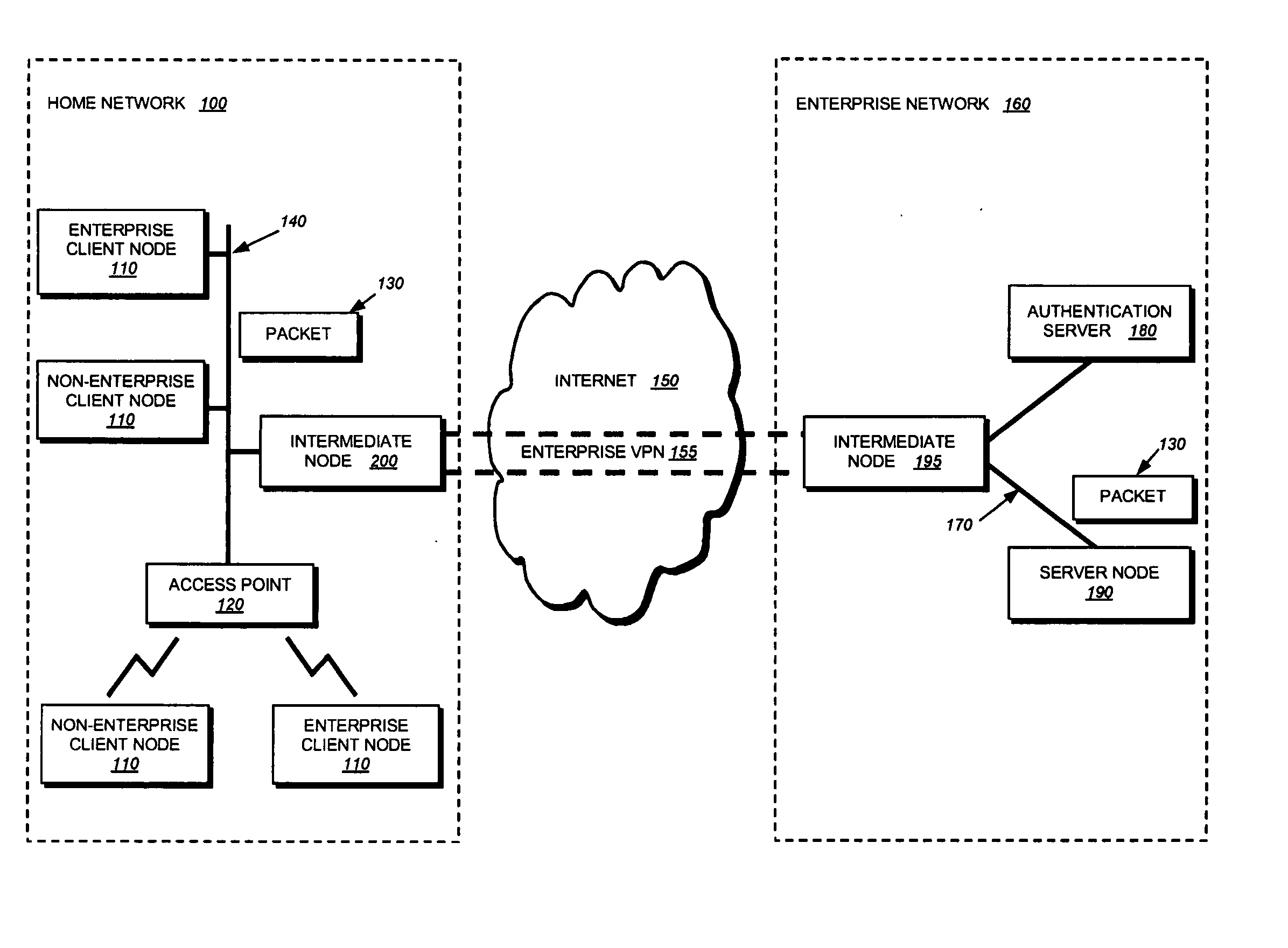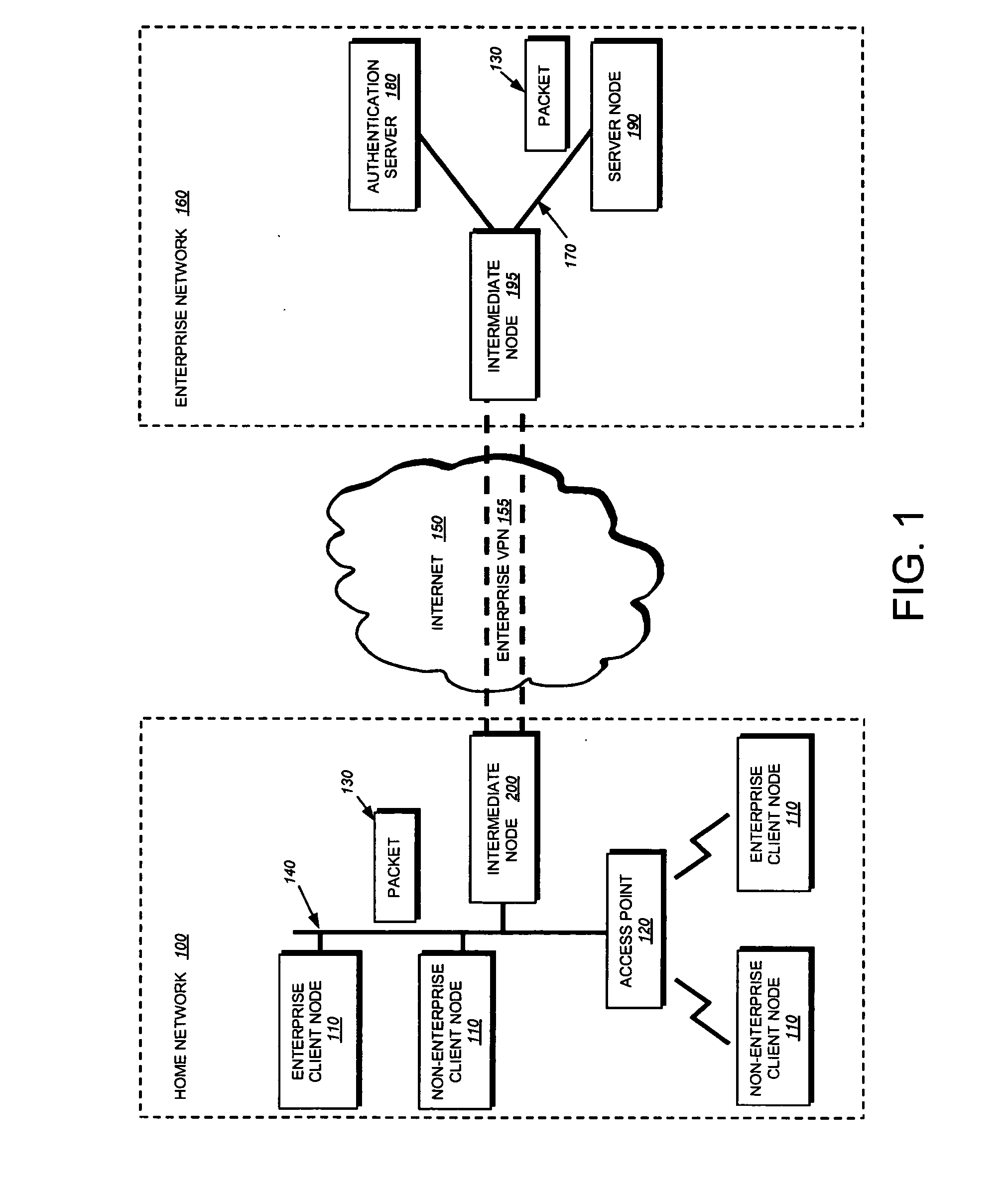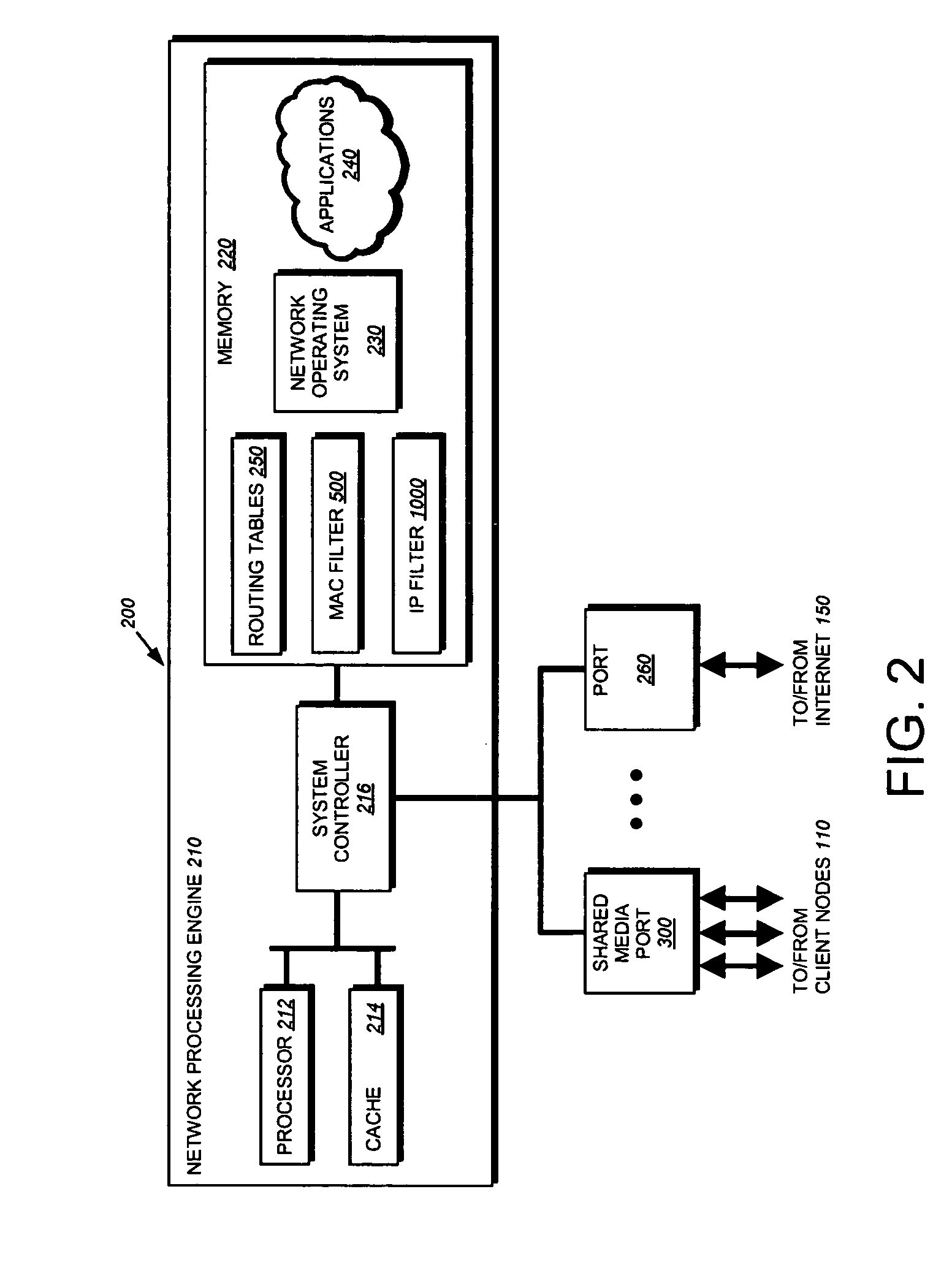802.1X authentication technique for shared media
- Summary
- Abstract
- Description
- Claims
- Application Information
AI Technical Summary
Benefits of technology
Problems solved by technology
Method used
Image
Examples
Embodiment Construction
A. Network Environment
[0041] The present invention provides a technique for securely implementing port-based authentication on a shared media port in an intermediate node, such as a router, switch, bridge, etc. FIG. 1 illustrates an exemplary network configuration including an intermediate node 200 that may be employed in accordance with the inventive technique. Specifically, a “home” computer network 100 is coupled to a remote “enterprise” network 160 through a virtual private network 155 (VPN) established at the intermediate node 200. The VPN effectively creates a secure communication “tunnel” through an untrusted network, such as the Internet 150. In this context, the enterprise network is implemented within an organization, such as a business. On the other hand, the home network is implemented by a telecommuter, or the like, who is permitted to remotely access resources in the enterprise network.
[0042] The home network 100 may include a plurality of interconnected client nodes ...
PUM
 Login to View More
Login to View More Abstract
Description
Claims
Application Information
 Login to View More
Login to View More - R&D
- Intellectual Property
- Life Sciences
- Materials
- Tech Scout
- Unparalleled Data Quality
- Higher Quality Content
- 60% Fewer Hallucinations
Browse by: Latest US Patents, China's latest patents, Technical Efficacy Thesaurus, Application Domain, Technology Topic, Popular Technical Reports.
© 2025 PatSnap. All rights reserved.Legal|Privacy policy|Modern Slavery Act Transparency Statement|Sitemap|About US| Contact US: help@patsnap.com



